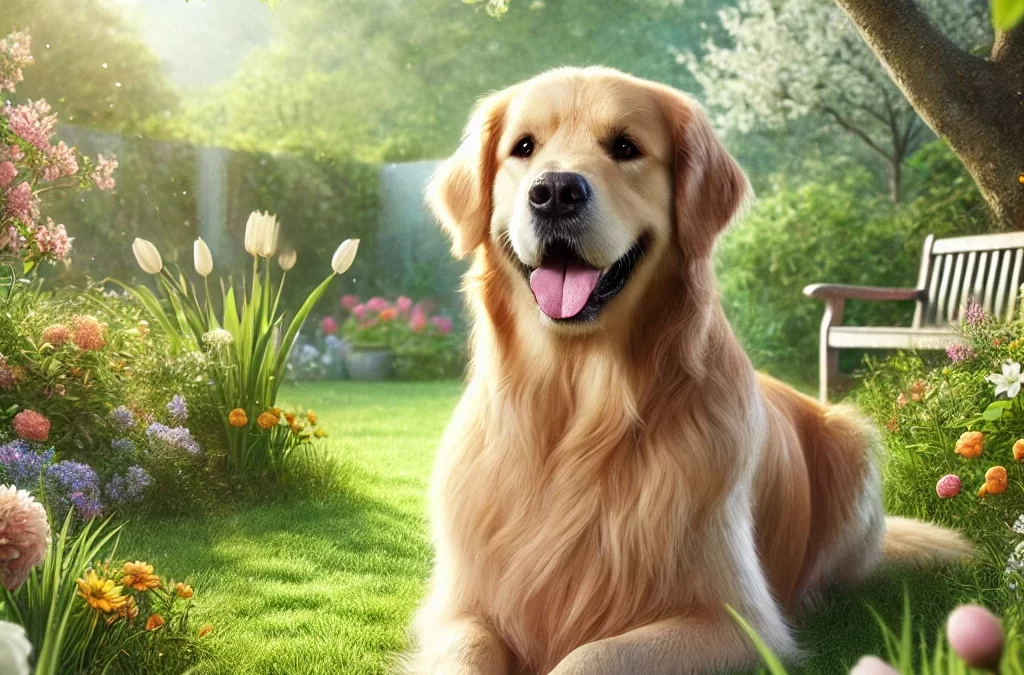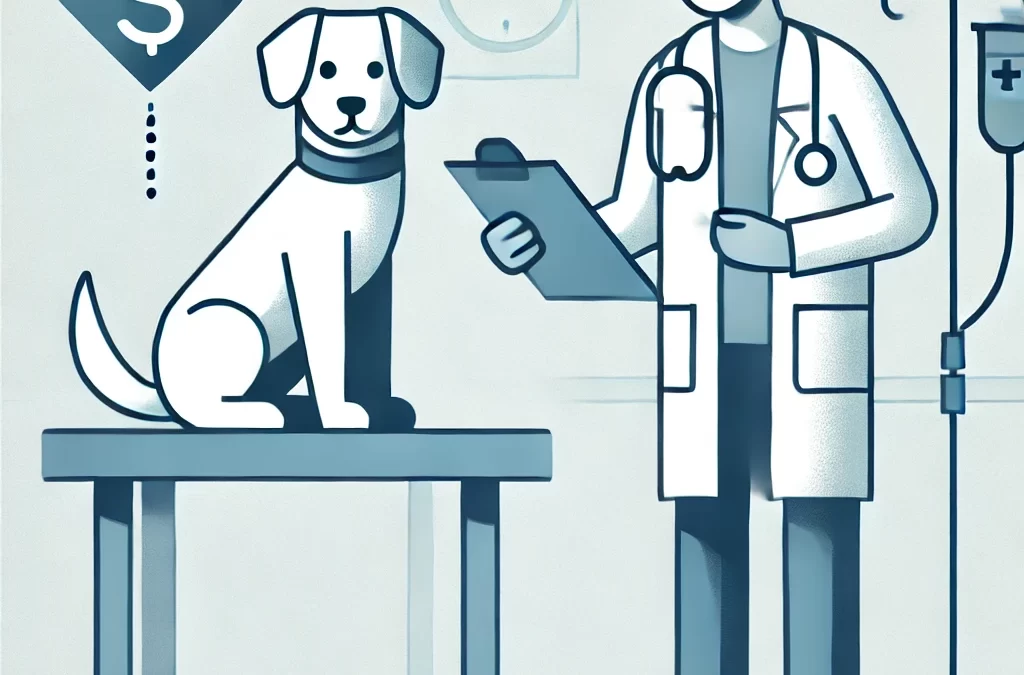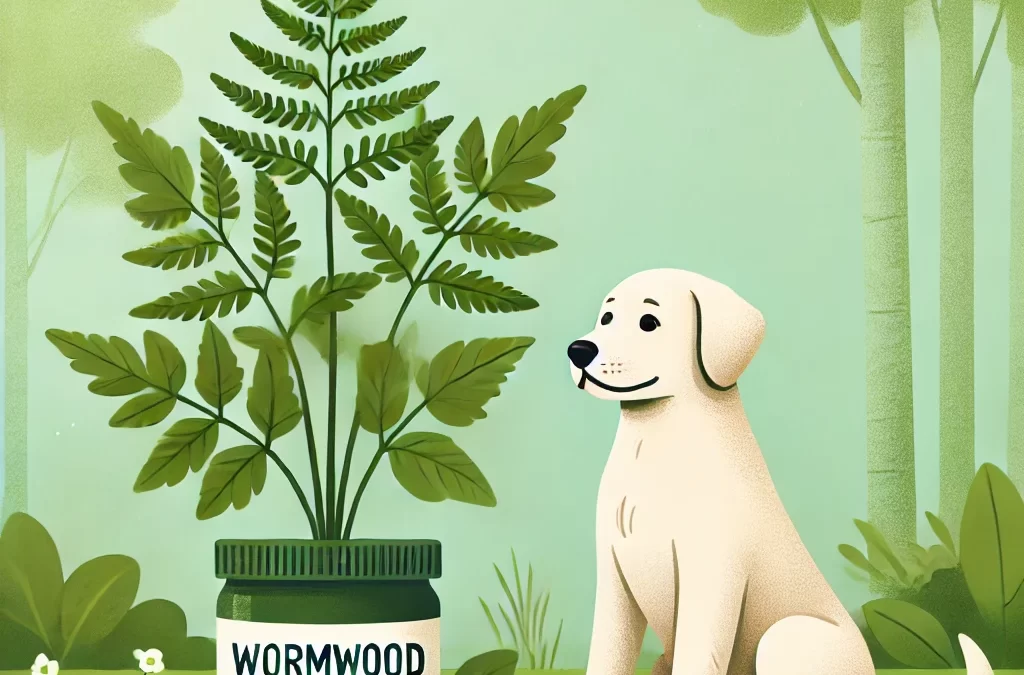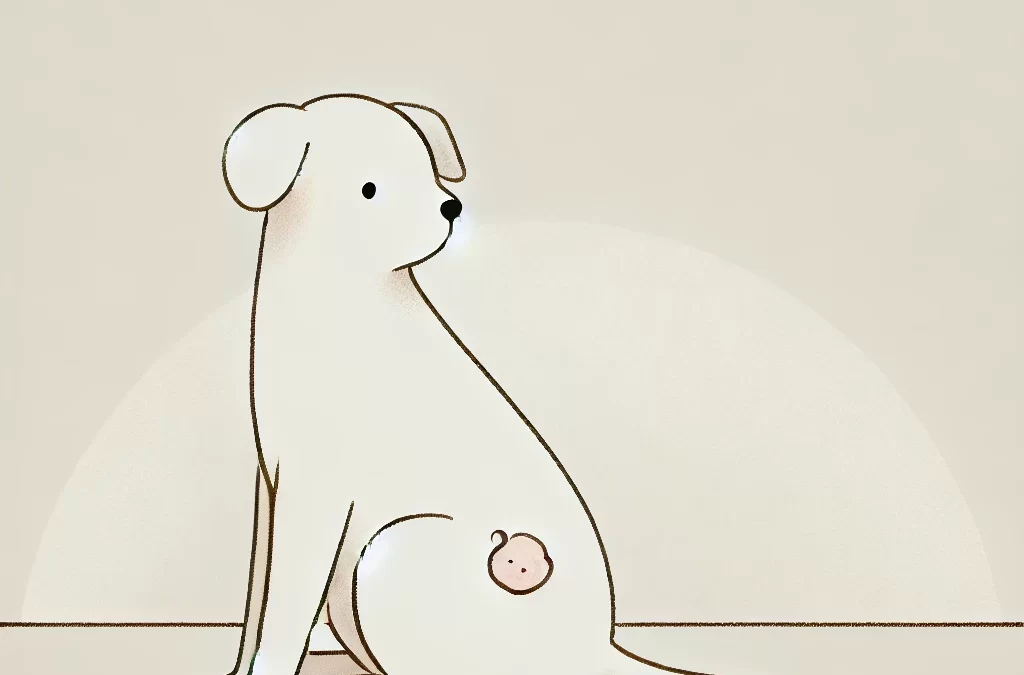
執筆者 TCMVET | 2024年11月25日 | 犬の癌と腫瘍
骨肉腫は、非常に悪性の骨癌で、犬の飼い主の心に恐怖を植え付けることがよくあります。切断や化学療法などの従来の治療法は一般的ですが、経済的にも精神的にも負担が大きい場合があります。しかし、生活の質を向上させ、症状を緩和し、体の治癒プロセスをサポートする可能性がある自然療法が注目を集めています。以下では、犬の骨肉腫に合わせたさまざまな革新的な自然療法について詳しく説明します。
犬の骨肉腫について理解する
骨肉腫は、主に大型犬や超大型犬に発生し、四肢に発生します。腫瘍の成長が速く、肺への転移リスクが高いのが特徴です。早期発見と多面的な治療アプローチにより、犬の生活の質を大幅に向上させることができます。
愛犬の旅をサポートする自然療法
1. 痛みの管理のためのハーブ療法
自然な痛みのコントロールにより、副作用を伴うことが多い医薬品への依存を減らすことができます。以下のハーブを検討してください。
- ボスウェリアセラータ: 抗炎症作用があることで知られるこの樹脂は、腫れを抑え、可動性を向上させます。
- ターメリック(クルクミン): 強力な抗炎症作用と抗酸化作用を持つターメリックは、関節の不快感を和らげる効果があり、抗がん作用についても研究されています。
- 雲南白耀: 血液循環を促進し、特に骨関連の損傷や癌の痛みを和らげる漢方薬として知られています。
2. 免疫力を高める食事戦略
がん治療中の犬の免疫システムをサポートするには、栄養が重要な役割を果たします。次の点に重点を置きます。
- 高タンパク質食: 筋肉量とエネルギーレベルを維持するため。
- オメガ3脂肪酸: 魚油に含まれるこれらは炎症を軽減し、腫瘍の成長を遅らせるのに役立ちます。
- 低炭水化物、高脂肪の食事がん細胞は糖分を栄養源として増殖するため、ケトン食療法は腫瘍の進行を抑制する可能性があります。
3. がん治療のためのカンナビジオール(CBD)
麻から抽出した CBD オイルは、抗炎症作用と抗腫瘍作用で知られています。次のような効果があります:
- 痛みや不安を軽減します。
- 食欲とエネルギーレベルを改善します。
- 新たな研究で示されているように、癌細胞の増殖を阻害する可能性があります。
CBD オイルを選ぶときは、フルスペクトル、オーガニック、THC フリーであることを確認してください。
4. Acupuncture and Traditional Chinese Medicine (TCM)
鍼治療などの中医学治療は、以下の方法で他の治療法を補完することができます。
- 痛みを和らげ、血行を改善します。
- 免疫機能を強化します。
- 体のエネルギー(気)のバランスを回復します。
ハーブ製剤など 白土霄 腫瘍の成長を特に標的とし、全体的な健康状態を改善する可能性があります。愛犬に合わせた治療を行うには、必ず中医学の経験がある獣医師に相談してください。
5. 理学療法と軽い運動
手術後または緩和ケアの一環として、理学療法は次のような効果をもたらします。
- 可動性を維持し、筋肉の萎縮を防ぎます。
- 気分と精神的な関与を高めます。水泳や規則正しい散歩などの活動は、四肢を切断した犬にとって特に効果的です。
6. ホメオパシー的アプローチ
ペットの飼い主の中には、次のようなホメオパシー療法を検討する人もいます。
- シンフィトゥム: 「骨の癒合」として知られるこの治療法は、骨の治癒をサポートする可能性があります。
- ヘクラ溶岩: 腫瘍や骨肉腫などの骨疾患の治療に使用されます。
適切な指導と投与量についてはホメオパシー獣医に相談してください。
ケーススタディ: 自然な旅
骨肉腫と診断された 9 歳のグレート デーンのベラの話をしましょう。ベラの飼い主は、切断手術を受けた後、従来の治療に加えて、高タンパク質、低炭水化物の食事、CBD オイル、ボスウェリア抽出物を摂取しました。定期的な鍼治療で、ベラの運動能力と気分は改善しました。この総合的なアプローチにより、ベラの寿命が延びただけでなく、ベラは快適で尊厳のある生活を送ることができました。
自然療法を探している犬の飼い主のためのヒント
- ホリスティック獣医師と協力する: 協力により治療の安全性と有効性が確保されます。
- 進捗状況を注意深く監視する定期的な検査と画像診断は、治療の効果を評価するのに役立ちます。
- オープンマインドでいよう自然療法と従来の治療法を組み合わせると、最良の結果が得られることが多いです。
感情的なサポートの重要性
がんにかかった犬の世話は、精神的に疲れることがあります。友人、家族、ホリスティック獣医師のサポート ネットワークを構築することで、この旅を孤独に過ごすことがなくなります。
結論
犬の骨肉腫に対する自然療法は、生活の質の向上、痛みの緩和、免疫システムのサポートに重点を置いています。科学的根拠に基づいた自然療法と従来の治療法を組み合わせることで、犬の快適さと健康を優先するケア プランを作成できます。犬はそれぞれ個性があり、それに合わせたアプローチが成功の鍵となることを忘れないでください。
あなたの愛犬には戦うチャンスが当然与えられます。

執筆者 TCMVET | 2024年11月24日 | 犬の癌と腫瘍
愛するペットが癌と診断されると、飼い主である飼い主の精神的負担は計り知れません。しかし、心痛とともに、治療費というもう一つの厳しい現実が待ち受けています。ペットの癌治療は命を救うこともありますが、高額な費用がかかることも少なくありません。では、愛するペットに闘うチャンスを与えるために実際にかかる費用はいくらなのでしょうか。また、ペットの命の価値を金銭で測るにはどうすればいいのでしょうか。
平均コストの内訳
ペットの癌治療の費用は、癌の種類、診断段階、治療の選択肢、場所などの要因によって大きく異なります。一般的な内訳は次のとおりです。
- 診断:
- X線検査、超音波検査、生検、血液検査の費用は $500および$1,500CTスキャンやMRIなどの高度な画像診断により、 $1,000から$2,500.
- 手術:
- 腫瘍の外科的切除は、多くの場合、 $1,000から$5,000複雑さと場所によって異なります。
- 化学療法:
- 化学療法のプロトコルの費用は $3,000と$10,000セッション数や使用する薬剤によって異なります。
- 放射線治療:
- この高度な治療法は、 $5,000から$15,000、最も高価なオプションの 1 つになります。
- 緩和ケア:
- 根治的治療が不可能な場合、症状を管理するための緩和ケアには依然として費用がかかる可能性がある。 $500から$2,000.
ペットの癌治療にかかる平均費用は、 $5,000と$20,000時にはそれ以上になることもあります。これらの数字は、特に家計予算と比較すると、厳しいものとなります。
感情的コストと金銭的コスト
多くのペットの飼い主にとって、がん治療を受ける決断は、単に経済的な理由だけではなく、深い感情的な問題でもあります。ペットは家族であり、ペットを救うためにできる限りのことをしないという考えは耐え難いものです。しかし、獣医腫瘍学の現実は、成功が保証されておらず、積極的な治療を行ってもペットの寿命が数か月または数年しか延びない可能性があるということです。
- 感情的な配慮:
治療によって得られる時間の価値は、数週間、数か月、あるいは数年であっても、簡単に数値化できるものではありません。多くのペットの飼い主は、ペットと充実した時間を過ごせる時間が数か月増えただけでも、1 円の価値があったと報告しています。
- 財政的負担:
しかし、治療費が家計の足かせになる場合など、経済的な負担は罪悪感やストレスにつながる可能性があります。これは決してうらやましい状況ではありません。愛がかかっているときに、どうやって「ノー」と言えるのでしょうか。
コストを削減する方法はありますか?
がんの診断を受けたペットの飼い主は、治療費を管理し、削減する方法があることを知っておく必要があります。
- ペット保険:
ペット保険は、早期に購入すれば、がん治療費の大部分をカバーできます。ただし、既往症は通常は対象外となります。
- 非営利団体:
いくつかの団体がペットの医療、特に癌治療に対して財政援助を行っています。
- 全体的および緩和的選択肢:
予後が悪いペットの場合、CBD オイル、鍼治療、天然サプリメントなどのホリスティック治療は、より手頃な方法で生活の質を改善できる可能性があります。
- 臨床試験:
一部の獣医機関は新たな癌治療法の臨床試験を実施しており、費用の一部を負担することが多い。
- 獣医師と選択肢について話し合う:
多くの獣医は、ペットの飼い主と協力して現実的で手頃な治療計画を立てようとします。一部のクリニックでは分割払いプランも提供しています。
それは価値があるのでしょうか?
ペットの癌治療の費用が「価値がある」かどうかという問題は、非常に個人的な問題です。ある人にとっては、その答えは「イエス」です。なぜなら、愛のためにはどんな代償も高すぎることはないからです。他の人にとっては、治療を断念するという決断は失敗の兆候ではなく、ペットの命をどんな犠牲を払ってでも延命することよりもペットの快適さと尊厳を優先する思いやりの行為です。
ペットの癌治療の価値を再定義する
結局のところ、ペットの癌治療の平均費用は単なる金銭的な統計ではなく、私たちが愛犬のためにどれだけ努力するかを反映しています。この旅は、お金と同じくらい、希望、愛、そして忍耐力に関するものです。治療を受けるか緩和ケアを選択するかは、ペットとの絆とペットの生活の質を尊重する決断であるべきです。
獣医腫瘍学の分野が進歩するにつれ、いつかは私たちの愛情を金銭で測る必要がなくなるかもしれません。それまでは、私たちは心と財布を使って、ペットにふさわしい生活を与えるために最善を尽くします。

執筆者 TCMVET | 2024年11月24日 | 犬の癌と腫瘍
犬の癌の治療に自然療法を利用することは近年大きな注目を集めており、ニガヨモギが興味深い候補として浮上しています。科学的には アルテミシア・アブサンティウムニガヨモギは伝統医学では長い歴史がありますが、特に犬の癌治療におけるその潜在的な効能が、研究者やペットの飼い主の間で関心を集め始めたのはごく最近のことです。この古代のハーブは、犬の癌との戦いに期待が持てるでしょうか?
よもぎとは何ですか?
ニガヨモギは、その苦味と薬効で有名な多年生草本です。ニガヨモギは、消化器系の問題や寄生虫感染症の治療に伝統的に使用されてきましたが、抗炎症、抗菌、さらには抗がん作用があることでも知られています。ニガヨモギの主要活性化合物であるアルテミシニンは、人間の特定の種類のがん細胞に対する有効性について広範囲に研究されてきました。
ニガヨモギとガンの科学的根拠
研究によると、アルテミシニンは鉄分を豊富に含む癌細胞を標的にすることで効果を発揮する可能性がある。鉄分は癌細胞が急速な成長を促すために蓄積するミネラルである。アルテミシニンはこの鉄分と相互作用してフリーラジカルを生成し、癌細胞を破壊しながらも健康な細胞を比較的無傷のまま残すことができる。ほとんどの研究は人間への応用に焦点を当てているが、その原理は獣医腫瘍学の関心を喚起している。
ニガヨモギと犬の癌:潜在的な関連性
骨肉腫、リンパ腫、肥満細胞腫などの癌と診断された犬は、手術、化学療法、放射線療法などの高額で侵襲的な治療を受けることがよくあります。多くのペットの飼い主は、犬の生活の質を向上させるために補完療法に目を向けており、この目的でニガヨモギがますます研究されています。ホリスティック獣医師とペットの飼い主からの逸話的な証拠は、ニガヨモギが腫瘍の成長を抑え、炎症を緩和し、全体的な活力を高めるのに役立つ可能性があることを示唆しています。
がんを患う犬にニガヨモギがどのように役立つか
- 抗がん作用ニガヨモギに含まれるアルテミシニンは癌細胞を標的にして殺し、病気の進行を遅らせる可能性があります。
- 抗炎症効果ニガヨモギの抗炎症作用は、腫瘍や転移のある犬の不快感を軽減し、運動能力を改善する可能性があります。
- 免疫サポートニガヨモギは、癌と闘う犬にとって非常に重要な免疫システムをサポートすると考えられています。
注意事項と考慮事項
ニガヨモギにはその潜在能力があるにもかかわらず、リスクがないわけではありません。多量に摂取すると毒性があり、嘔吐、下痢、神経系の問題などの副作用を引き起こす可能性があります。また、すべての犬がニガヨモギベースの治療に適しているわけではありません。犬の治療にニガヨモギを取り入れる前に、ホリスティックまたは統合的な獣医に相談することが不可欠です。
現実的な期待:補完的なツール
ニガヨモギは癌の治療薬ではなく、潜在的な補完療法であることに留意することが重要です。ニガヨモギの効能は、癌の種類や段階、犬の全体的な健康状態によって異なります。ニガヨモギを従来の治療法や、CBD オイルや薬用キノコなどの他の自然療法と組み合わせると、その効果を高めながら、癌治療に多面的なアプローチを提供できます。
獣医学におけるニガヨモギ研究の将来
犬の癌に対するニガヨモギの広範囲な臨床試験が不足していることから、さらなる研究が必要であることが強調されます。しかし、初期の研究結果と成功事例は、ニガヨモギがより広範な自然癌治療戦略の一部として有望であることを示しています。科学的検証が進めば、ニガヨモギはホリスティック獣医ケアの定番になる可能性があります。
結論
愛犬の生活の質を向上させるための代替案を探している飼い主にとって、ニガヨモギは魅力的な可能性を秘めています。ニガヨモギには抗がん作用とサポート作用があり、犬のがん治療に検討する価値のある候補です。ただし、他の治療と同様に、注意と専門家の指導が重要です。愛犬のためにニガヨモギを検討している場合は、健康への道のりは、伝統的なアプローチと現代的なアプローチの両方の長所を組み合わせることであることを忘れないでください。
ニガヨモギと犬のガン ― 現代の課題を解決する古代のハーブ。あなたの愛犬が必要とする自然な解決策になるでしょうか? 時間と研究だけが答えを教えてくれます。

執筆者 TCMVET | 2024年11月23日 | 犬の癌と腫瘍
肥満細胞腫(MCT)は犬に最もよく見られる癌の一種で、皮膚にしこりとして現れることが多いです。適切な治療で生き延びる犬もいれば、この病気で死ぬ犬もいます。肥満細胞腫が死に至るプロセスは複雑で徐々に進行し、犬の全身に影響を及ぼす一連の生物学的障害を伴います。この記事では、肥満細胞腫がどのようにして致命的な結果をもたらすのか、あまり研究されていない経緯について詳しく説明します。
生物学的戦場: 肥満細胞腫を理解する
肥満細胞は免疫システムの一部であり、アレルギーや感染症と戦うためにヒスタミンやその他の化学物質を放出する役割を担っています。しかし、これらの細胞が癌化すると、体内で大混乱を引き起こします。
肥満細胞腫は、原発性腫瘍自体が原因ではなく、全身的な影響によって危険な状態になることがよくあります。これらの影響は、多くの犬の飼い主を驚かせるような形で、生命を脅かす合併症を引き起こす可能性があります。
サイレントキラー:死亡の背後にあるメカニズム
1. ヒスタミン過剰:内部の嵐
肥満細胞腫の最も陰険な影響の 1 つは、ヒスタミンやその他の化学伝達物質の過剰な放出です。これにより、次のような症状が起こります。
- 胃潰瘍: ヒスタミンは胃酸の分泌を刺激し、胃潰瘍を引き起こす可能性があります。これらの潰瘍は出血を引き起こし、重度の貧血や生命を脅かす出血を引き起こす可能性があります。
- ショック: ヒスタミンが突然放出されると、全身の炎症や血圧の危険な低下を引き起こし、アナフィラキシーショックを引き起こす可能性があります。
2. 臓器不全:ドミノ効果
肥満細胞腫が転移すると、肝臓、脾臓、骨髄などの重要な臓器に侵入します。その結果、次のような症状が現れます。
- 肝機能障害: 肝臓が毒素を処理できないと、黄疸や全身中毒を引き起こす可能性があります。
- 骨髄抑制:肥満細胞が骨髄に浸潤すると、赤血球と白血球の生成が阻害され、貧血や免疫力の低下を引き起こします。
3. 悪液質:がん消耗症候群
悪液質、つまり癌関連の消耗は、進行した肥満細胞腫瘍を持つ犬の一般的な死因です。腫瘍は犬の代謝を変化させ、次のような症状を引き起こします。
- 筋肉の減少: 食事をしているにもかかわらず、犬は筋肉量と筋力を失います。
- 疲労: この衰弱状態により、単純な活動さえも耐えられなくなる可能性があります。
4. 制御不能な腫瘍の増殖:局所的な破壊
場合によっては、腫瘍自体が急速に成長し、周囲の組織に浸潤します。これにより、次のような症状が引き起こされる可能性があります。
- 開いた傷:潰瘍化した腫瘍は感染し、敗血症を引き起こす可能性があります。
- 痛みと可動性の問題: 関節や重要な構造の近くにある腫瘍は、耐え難い痛みを引き起こし、動きを制限する可能性があります。
生物学を超えて:感情と行動の変化
肥満細胞腫を患っている犬は、痛み、不快感、または全身疾患により行動に変化が現れることがあります。落ち着きのなさ、攻撃性、引きこもりなどの兆候は見過ごされがちですが、犬の苦しみの深刻さを示しています。
沈黙を破る:早期介入の重要性
肥満細胞腫は致命的となる可能性がありますが、進行は必ずしも避けられません。早期発見と治療により、結果を大幅に変えることができます。以下に、予防策をいくつか示します。
- 頻繁な獣医の診察: 定期的な検査により、腫瘍を早期に発見できる可能性が高まります。
- すべてのしこりを生検する: 良性のように見えるしこりでも、肥満細胞腫である可能性があります。
- 併用療法: 手術、放射線療法、化学療法が一般的なアプローチですが、免疫療法などの新しい方法も登場しています。
新たなフロンティア:MCT のためのホリスティックケア
従来の治療法に加えて、総合的なアプローチを統合することで、犬の生活の質を向上させることができます。
- 食生活の調整: オメガ 3 脂肪酸を含む抗炎症食は、全体的な健康をサポートします。
- ハーブサプリメント: ターメリックやボスウェリアなどの成分は炎症を軽減するのに役立つ可能性があります。
- ストレスの軽減: 慢性的なストレスはがんの症状を悪化させる可能性があります。落ち着いた環境と軽い運動が効果を発揮する可能性があります。
別れを告げる時はいつでしょうか?
肥満細胞腫を患った犬を安楽死させるかどうかの決断は、飼い主にとって最も難しい決断の 1 つです。生活の質スケール (QoL) などのツールは、痛みのレベル、食欲、犬が日常の活動を楽しむ能力に焦点を当て、この決断を導くことができます。
結論:理解して力を与える
肥満細胞腫は単なるしこりではありません。犬の体を静かに、そして徐々に蝕む全身的な脅威です。肥満細胞腫の致死性のメカニズムを理解することで、飼い主と獣医師は十分な情報に基づいた決定を下し、苦痛を軽減して結果を改善できます。知識を得ることで、私たちは愛するペットと過ごすすべての瞬間を可能な限り苦痛のない充実したものにすることができます。

執筆者 TCMVET | 2024年11月23日 | 犬の癌と腫瘍
ペットが癌と診断されると、痛みの管理が最も差し迫った懸念事項の 1 つになります。痛みはペットの生活の質だけでなく、食べる、遊ぶ、触れ合う意欲にも影響します。医薬品などの従来の鎮痛法には副作用が伴うことが多く、ペットの飼い主に葛藤を与える可能性があります。しかし、従来の方法を超えて、画期的で総合的な鎮痛法を検討したらどうなるでしょうか。
癌に罹った犬の痛みを理解する
癌に罹った犬の痛みは、多くの場合多面的です。腫瘍は神経を圧迫したり、組織を侵したり、炎症を引き起こしたりして、急性または慢性の不快感を引き起こします。この痛みの性質を理解することが、適切な緩和方法を選択する鍵となります。
NSAID やオピオイドなどの従来の選択肢は、一定の役割を果たしていますが、胃腸障害、肝臓への負担、依存症などのリスクを伴う可能性があります。既成概念にとらわれず、痛みを和らげるだけでなく全体的な健康をサポートする代替手段でペットの飼い主を支援する時が来ています。
痛みを和らげるホリスティックアプローチ
1. 鍼灸と指圧
古代中国医学に根ざした鍼治療は、世界中の獣医師の間で人気を集めています。鍼治療は、体の特定のポイントを刺激することで、体内の天然鎮痛剤であるエンドルフィンの放出を促し、患部への血流を改善します。
- なぜ効果的なのか: 研究によると、鍼治療は痛みや炎症を軽減できるため、がんによる不快感を経験している犬にとって実行可能な選択肢となります。
2. ハーブ鎮痛剤
特定のハーブ療法は炎症や痛みを軽減する効果が期待されています。 チュアンシオン(四川ラビジン)、ターメリック、フランキンセンスには天然の抗炎症作用があります。
- 使い方: これらをサプリメントやお茶として(獣医の指導の下で)取り入れることで、従来の医薬品への依存を減らすことができます。
3. フルスペクトラムヘンプオイル
麻から抽出された CBD は、痛みと不安の両方を管理する能力があることから、ペットの飼い主の間で人気となっています。フルスペクトル オイルには、相乗的に作用する追加のカンナビノイドとテルペンが含まれており、さらに痛みを和らげます。
- 何が違うのか: CBD は体内のエンドカンナビノイド システムと相互作用し、THC の精神活性作用なしに炎症に対処し、痛みを調整します。
4. コールドレーザー療法
コールドレーザー療法は、光を使用して細胞の再生を刺激し、炎症を軽減する非侵襲的な治療法です。この技術は痛みがなく、可動性と快適性を大幅に改善できます。
5. 痛みの緩和のための食事療法
栄養価が高く、抗炎症作用のある食事は、ガンに罹った犬にとって大きな変化をもたらす可能性があります。オメガ 3 脂肪酸 (魚油に含まれる) と抗酸化物質を豊富に含む食品は、全身の炎症や痛みを軽減するのに役立ちます。
- 試すべきレシピ: 調理した赤身の肉、ニンジンやブロッコリーなどの野菜のピューレ、少量のターメリックやショウガを混ぜたものは、栄養価が高く、治療効果もあります。
痛みの管理における感情的要素
痛みは身体的な痛みだけではなく、精神的な負担も伴います。犬は痛みを感じると、引っ込み思案になったり、イライラしたりしがちです。犬にストレスのない環境、十分な愛情、精神的な刺激を与えることで、大きな違いが生まれます。
これを試してください: マッサージ療法を犬の日課に取り入れましょう。優しく撫でたり圧力をかけたりすることで、緊張した筋肉をほぐし、血行を良くすることができ、絆を深める活動としても役立ちます。
未来を垣間見る:再生医療
幹細胞療法などの再生医療の目覚ましい進歩は、犬の癌による痛みを画期的に緩和する道を切り開いています。幹細胞は損傷した組織を修復し、炎症を軽減できるため、これまで治療不可能と思われていた症状に希望をもたらします。
包括的な疼痛管理計画の作成
犬の癌による痛みを和らげるには、1 つの方法を選択するのではなく、個別の計画を立てることが重要です。獣医師と緊密に協力して、伝統的療法と代替療法の最良のものを組み合わせてください。
プラン例:
- 朝:朝食と一緒にCBDオイル
- 午後:鍼治療または冷光レーザー治療
- 夜:オメガが豊富な食事とハーブサプリメント
別れを告げるタイミング
痛みの管理は犬だけの問題ではなく、飼い主にとっても重要です。いつ手放すべきかを知ることは最も難しい決断の1つですが、時には最も愛情深い選択となることもあります。 HHHHHMMスケール (痛み、空腹、水分補給、衛生、幸福、運動能力、悪い日よりも良い日が多いこと) がこの決定を導くのに役立ちます。
結論: 痛みの緩和は目的地ではなく旅である
犬の癌による痛みを管理するには、創造性、思いやり、そして型破りな選択肢を模索する意欲が必要です。鍼治療から食事の調整まで、痛みを和らげるために取る小さな一歩一つが、犬の生活の質を向上させます。ペットの飼い主として、私たちが犬に与える最大の贈り物は、彼らの最後の章ができるだけ多くの快適さと愛で満たされるようにすることです。

執筆者 TCMVET | 2024年11月22日 | 犬の癌と腫瘍
愛犬の体にしこりや腫れ物を見つけるのは不安な経験ですが、すべての腫瘍が危険なわけではありません。たとえば、嚢胞は犬に比較的よく見られ、良性であることが多いです。しかし、犬の嚢胞は自然に消えるのだろうかという疑問が生じます。この問題を分析し、嚢胞の種類、原因、自然な対処法、専門家の介入が必要な場合などについて探ってみましょう。
嚢胞とは正確には何ですか?
嚢胞は、液体、半固体物質、または空気で満たされた閉じた袋です。多くの場合、皮膚の下に形成され、大きさはさまざまです。犬の嚢胞は、通常、毛包の詰まり、外傷、または感染症が原因です。ほとんどは無害ですが、その性質を理解することが犬の健康を保つ鍵となります。
犬の嚢胞の種類
- 皮脂嚢胞: 皮脂腺が詰まることで発生する最も一般的なタイプです。ゆっくりと大きくなる小さな塊として現れることが多く、時間が経つと破裂することがあります。
- 卵胞嚢胞: 毛包の詰まりに関連しており、多くの場合、刺激や遺伝が原因です。
- 真性嚢胞: 上皮の内層に包まれており、まれではあるが特徴的です。
- 膿瘍厳密には嚢胞ではありませんが、膿が詰まった感染した塊であり、嚢胞と間違われることがよくあります。
自然に解決するでしょうか?
答えは嚢胞の種類と根本的な原因によって異なります。
- 皮脂嚢胞これらは破裂して自然に排出されることもありますが、嚢が完全に除去されない限り再び詰まることがよくあります。
- 卵胞嚢胞: これらは介入なしに消えることはめったになく、時間の経過とともに大きくなる可能性があります。
- 感染した嚢胞または膿瘍: 合併症を防ぐためにすぐに治療が必要です。自然に治ることはありません。
一部の嚢胞は一時的にサイズが小さくなることはありますが、完全に自然に治癒することはまれです。
嚢胞を管理する自然なアプローチ
嚢胞が小さく、痛みがなく、獣医師が良性であると確認した場合は、自然療法を検討できます。これらの治療法は、炎症を軽減し、感染を防ぎ、皮膚の健康を促進することを目的としています。
1. 温湿布
温湿布は患部への血流を促進し、嚢胞の自然な排出を助けます。温水に浸した清潔な布を 1 日 2 回、5 ~ 10 分間優しく当ててください。
2. ターメリックペースト
ウコンは抗炎症作用と抗菌作用があるため、ペットの総合ケアによく使われています。ウコンの粉末とココナッツ オイルを混ぜてペースト状にし、嚢胞に塗ります (獣医の許可が必要です)。
3. ヒマシ油
リシノール酸を豊富に含むヒマシ油は炎症を軽減するのに役立ちます。綿棒で嚢胞に少量を塗ります。
4. 食生活の調整
犬の食事にオメガ 3 脂肪酸 (魚油) と抗酸化物質を豊富に含ませると、皮膚の健康状態が全体的に改善されます。組織の修復をサポートするビタミン E と C を豊富に含む食事を与えるようにしてください。
5. ハーブ療法
カレンデュラとカモミールの湿布には鎮静効果があり、治癒を促進する可能性があります。
獣医師の受診時期
小さな良性の嚢胞の治療には自然療法が効果的ですが、状況によっては専門家の診察が必要です。
- 急速な成長嚢胞が急速に大きくなる場合、根本的な問題があることを示している可能性があります。
- 痛みや不快感: 犬が痛みの兆候を示したり、触れられるのを避けたり、執拗にその部分を舐めたりする場合。
- Infection赤み、腫れ、熱感、膿の滲出は嚢胞感染の兆候です。
- 複数のしこり: システム的な問題または別の状態を示している可能性があります。
- 場所に関する懸念関節や重要な臓器の近くにある嚢胞は、すぐに検査する必要があります。
バランスのとれたアプローチ:自然と科学の融合
犬の嚢胞は、多くの場合無害ですが、注意深く観察する必要があります。自然療法と獣医の指導を組み合わせることで、犬の快適さと安全を確保できます。嚢胞が自然に完全に消えることはめったにないため、積極的なケアが不可欠であることを覚えておいてください。
要点は? 犬の体に嚢胞が見つかったとしても慌てないことです。その代わりに、嚢胞の大きさや行動を観察し、適切な場合は自然療法を使用し、より深刻な状態を除外するために獣医に相談してください。バランスのとれた情報に基づいたアプローチを取ることで、愛犬を健康で幸せで元気な状態に保つことができます。






